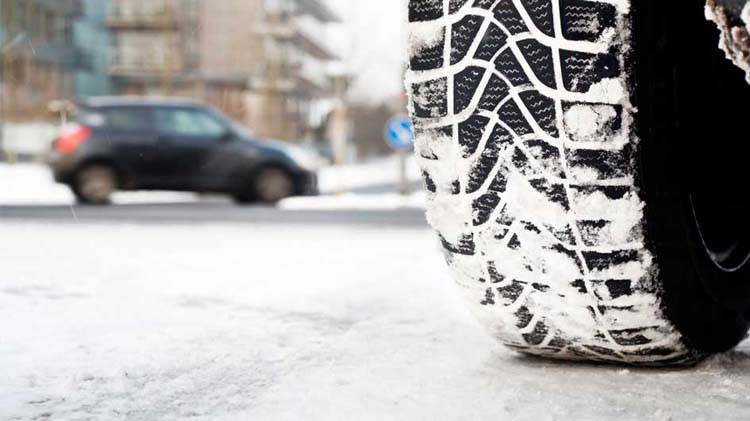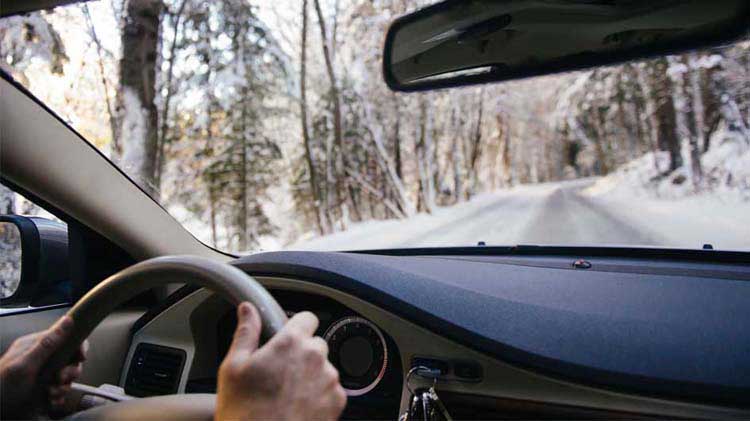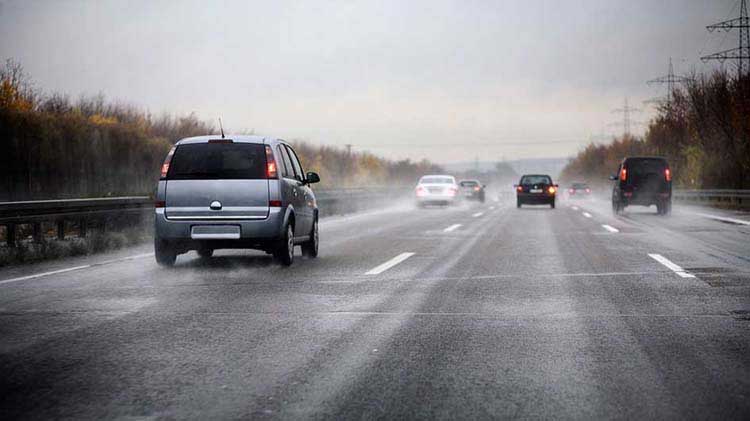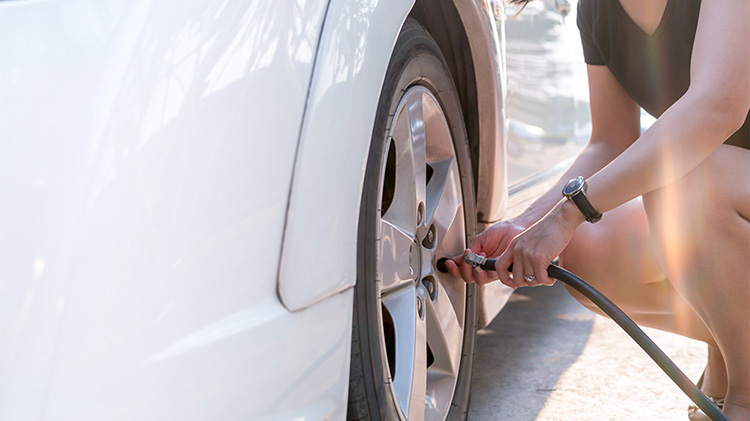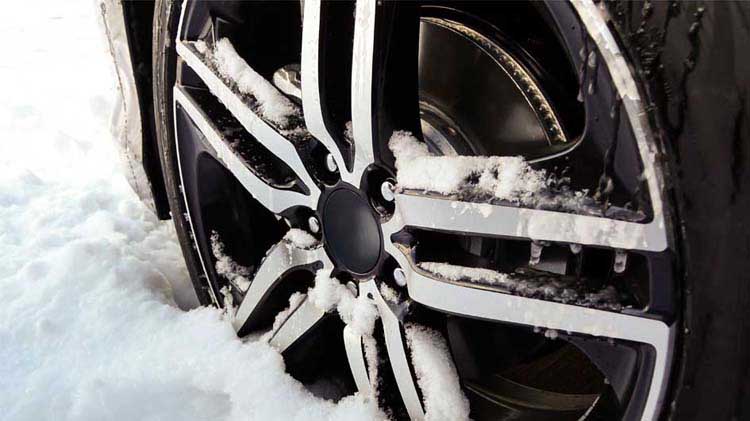Winter car tips
Help prepare your car for winter with these tips.
Road conditions can become very hazardous during winter weather. The roads might become wet, snowy, slushy or icy and poor visibility can result when it’s foggy. Of all weather-related crashes, 24% occur on slushy, icy or snowy roads. In 2020, weather-related crashes resulted in 374 fatalities.
State and local agencies spend $2.3 billion every year for snow removal and ice control, but even on a relatively short trip, you could find yourself stranded for several hours. It's important to plan ahead, like bundling up to stay warm, for the situations that can arise as winter conditions develop.
Winter car maintenance tips
Plan to winterize your car before the first storm of the season. Consider checking or talking to your mechanic about the following:
- Test the battery strength.
- Inspect the exhaust system and the air, fuel and emission filters.
- Check the heating and cooling system, windshield wiper and antifreeze fluid levels, and change the oil.
- Check both the front window and rear window defrosters.
- See that hoses, fan belts and all components are working properly.
- Consider changing the spark plugs.
- Each week, check the tire pressure and tread life. And consider installing winter tires as they're made to give you better traction on cold pavement.
- Locate the spare tire, jack and ice scraper.
- Check both the front and rear lights. The front lights should provide the brightest illumination possible. Replace any burned out bulbs.
- Inspect your wiper blades to see that they're functional and in good condition.
- If your vehicle runs on diesel, be wary about the fact that diesel fuel can gel in very cold temperatures. Winter fuel additives can be a good preventative. Also be aware that your fuel filter could potentially become blocked with gelled fuel, which would cause the vehicle to stall.
Some simple winter driving tips
Winter driving can have its own set of challenges from the moment you start your vehicle. Here are some useful winter driving suggestions:
- Clear frost, snow and ice thoroughly from all windows and exterior mirrors of your car. Brush snow away to help prevent it from blowing into your line of sight while driving.
- Never warm up your vehicle in a closed garage. This could lead to carbon monoxide problems.
- Consider keeping your gas tank at least half full to help prevent gas line freeze-up. It’s also a good idea to keep your tank full in case you become stuck in the snow waiting for rescue or if you have an emergency and need to drive somewhere.
- Check that your exhaust pipe is not clogged with mud or snow.
- Don't use cruise control on icy roads.
- Allow more time and space for braking when visibility is poor.
- Try to stay calm if you start to skid and be prepared for black ice.
- If your vehicle has anti-lock brakes, be familiar with how they operate so you are not surprised if your ABS brakes engage in slick driving conditions.
All drivers should think about using extra caution when driving in winter conditions. Slow down and allow additional time to get to your destination.
Carry a winter driving kit
Winter weather could leave you stuck in the snow, but including the following items in your winter driving kit might help you get back on the road and on your way:
- Small folding shovel
- Tow and tire chains
- Basic tool kit
- Bag of road salt or cat litter
- Flares, battery powered flashlights and extra batteries
- Bright cloth to tie on your car
- Whistle
- Extra windshield wiper fluid and antifreeze
- Jumper cables or an external battery charger to start your car if your battery dies
Pack a winter survival kit
Keep an emergency kit and small winter survival kit on hand. Some useful items include:
- A first-aid kit
- Cell phone charger
- Ice scraper and brush
- Medications
- Blankets, warm clothing, hats and gloves, scarves, hand and foot warmers, wool socks and other cold weather gear to help protect against hypothermia
- Insulated bottled drinking water and high-energy nonperishable foods
Snow safety tips if you become stranded in the winter
Few people like driving through a snow storm, and many heed warnings to stay off the roads when a storm is bearing down. But even the best-prepared and expert drivers can get stuck. If it happens to you, here are some important reminders:
- Be prepared. While the best first step is prevention, some storms come on quickly. If you do get stranded, keeping a few essentials in your car, as noted above, can help keep you comfortable while you wait.
- Stay inside. If possible, pull off the highway and turn on your hazard lights or tie something bright to your car's antenna or door handle to signal that you need help. Then wait inside your car until help arrives to avoid exposure to frostbite and help prevent hypothermia.
- Call 911. If you have a charged phone and reception, call for help and describe your location as best you can.
- Clear the tailpipe. Watch for oncoming traffic before exiting your vehicle. See that no snow is covering your tailpipe to help prevent potential carbon monoxide buildup inside the car. If you can do so safely, check the tailpipe periodically to ensure that fresh snow isn't blocking it.
- Keep moving. Staying active inside your car may help you keep warm. Clap your hands and tap your toes to help keep your circulation moving and prevent frostbite, but try to avoid overexertion and sweating.
- Drink fluids. Dehydration can make you more susceptible to the effects of the cold. If there's no drinking water inside your car, try melting some snow inside a bag or other makeshift cup to help stay hydrated.
- Conserve your vehicle's battery. Use the lights, heat, and radio sparingly.
- Run your engine. Provided you have enough gas in your tank, run the engine for about 10 minutes every hour to help keep the car warm. Turn on interior lights when your engine is on so you can be more visible inside your car. Open a downwind window slightly for ventilation.
- Don't overexert yourself. Cold weather can put your heart under added stress. If you're not used to exercise, shoveling snow or pushing a car could put you at increased risk of a heart attack.
Stay safe and warm this winter. Learn more about how to prepare for and recovery from winter storms. And to learn more about our Emergency Roadside Service, contact your agent.
